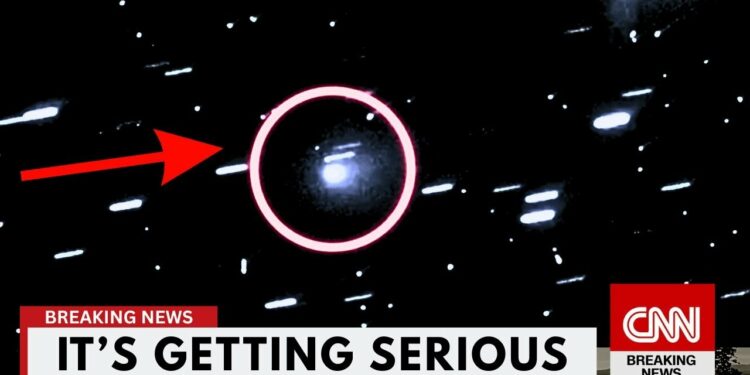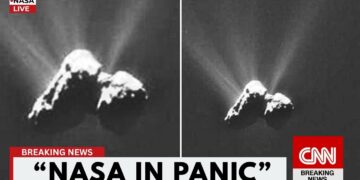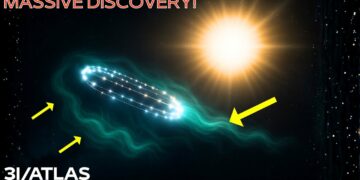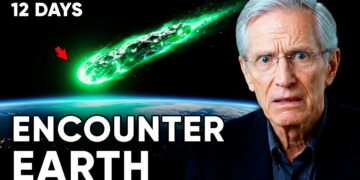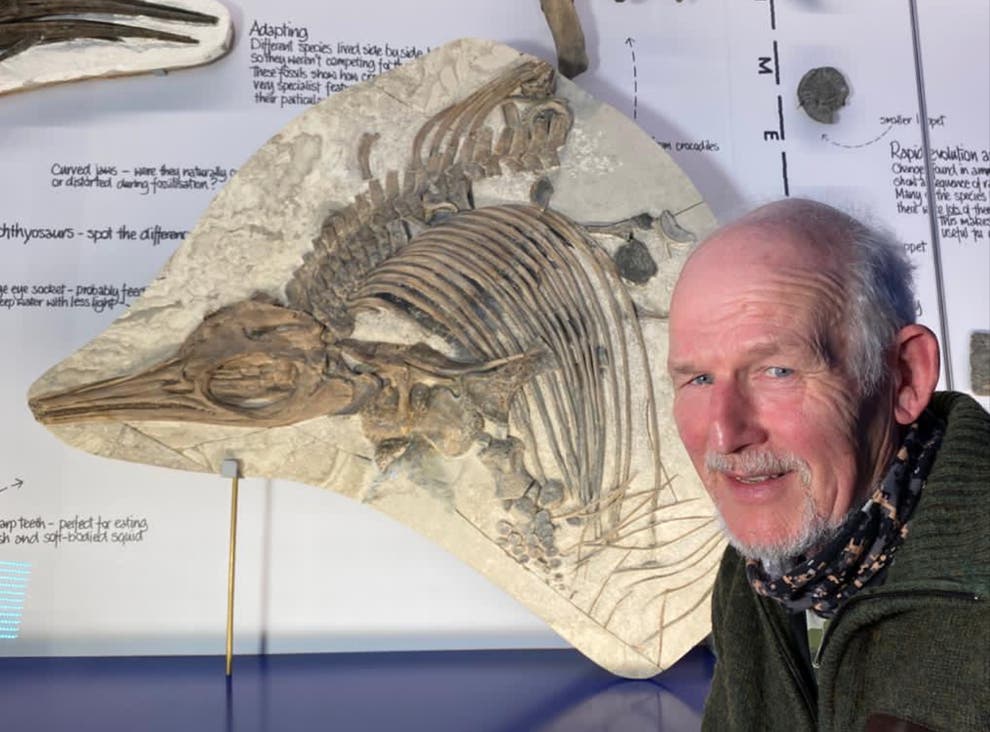Last week, astronomers detected a mysterious interstellar object, potentially the oldest comet ever observed. It marks only the third time we’ve identified an object originating beyond our solar system. This enigmatic visitor appears to be a fragment of another star system, ejected long ago and drifting through interstellar space for hundreds of millions, perhaps billions, of years—its age remains uncertain. Unlike anything in our solar system, its peculiar shape and anomalous features defy explanation. Its trajectory is equally bizarre, aligning with Earth’s orbit around the Sun and passing perilously close to inner planets like Jupiter, Mars, or Venus. It will reach its closest point to the Sun when Earth is on the opposite side, rendering it invisible to our telescopes. This precise timing could allow a spacecraft to execute a slowdown maneuver. Originating from the direction of the Milky Way’s crowded core, where stars cluster densely, it evaded detection until now. The James Webb Space Telescope has captured images of this strange object, leaving even leading scientists baffled. Is it a comet, an asteroid, or something far stranger?
It began with a faint glimmer in the data—a cold, silent, and swift object moving through our solar system in an unprecedented way. Telescopes from Hawaii to South Africa first spotted it, and NASA soon confirmed its existence: an uncharted object, unbound by the gravitational rules we expect. Most chillingly, it hails from beyond our solar system. Initially, it seemed like just another rock. But within hours, patterns emerged: a speed too fast, a trajectory too precise, and reflections too bright. When scientists traced its path, the result was unnerving—it was heading straight toward the heart of our system.
For decades, we’ve viewed space as silent and indifferent. But now, as this object streaks through our cosmic neighborhood, the James Webb Space Telescope has turned its gaze upon it, revealing something we may not be prepared for. Some are beginning to wonder: what if this isn’t just a passerby? What if it’s observing us?
First detected between June 25 and 29, the object—now designated 3-Atlas—appeared on the ATLAS system, a high-speed sky-scanning tool designed to catch hazardous objects. But this was no ordinary asteroid. Moving at over 52,000 miles per hour, its orbit defied the predictable paths of comets or solar system wanderers. Simulations tracing its trajectory pointed not to the Oort Cloud or Neptune, but to interstellar space, possibly the Milky Way’s core. This wasn’t a relic of our solar system’s formation—it had journeyed through the void for millennia, unseen, until it crossed into our domain.
Scientists worldwide scrambled to secure time on the James Webb Space Telescope, the most advanced observatory ever built, capable of peering deeper into space and time than any predecessor. Now focused on this unexpectedly close and unsettling object, Webb revealed a paradox. The object’s brightness suggested a massive size, yet measurements indicated something smaller. Its surface didn’t behave like rock or ice but reflected light like polished metal—cold, possibly hollow. Harvard astrophysicist Avi Loeb, who previously suggested the 2017 object ‘Oumuamua might be artificial, urged researchers to look for non-gravitational acceleration—subtle deviations in motion unexplained by the Sun’s gravity. Such deviations could imply the object isn’t drifting but navigating. If it’s navigating, we’re not observing a rock—we’re witnessing intent.
To grasp the gravity of this discovery, consider the two prior interstellar visitors. In 2017, ‘Oumuamua stunned scientists with its elongated shape, lack of a comet-like tail, and unexplained acceleration after passing the Sun, despite no visible propulsion. In 2019, Borisov appeared—a clear comet, but faster and more volatile than expected. Each left us with more questions than answers. But 3-Atlas is different, blending ‘Oumuamua’s strange reflectivity with Borisov’s peculiar trajectory. It doesn’t fit neatly as a rock or comet, prompting some to consider a radical possibility: these objects may not be random. They could be part of a pattern—a deliberate sequence of encounters disguised as chance. For centuries, our skies seemed empty. Now, suddenly, they’re not. The only change? Our growing technological reach.
Amid the data and models, one question looms, unaddressed by mainstream institutions: what if this object isn’t natural? When its brightness is too intense, its path too precise, and its motion defies gravity, the remaining possibility is one few dare voice—artificiality. Not Hollywood-style aliens, but probes, autonomous systems, or ancient messengers from distant civilizations. Loeb suggests we may have missed ‘Oumuamua’s message, and 3-Atlas could be a second chance. Its surface, speed, and timing hint at engineering. The James Webb Telescope continues to track its thermal signature, spin, and trajectory. But what if the answers reveal not just what it is, but who sent it? In a 13.8-billion-year-old universe, the most chilling discovery wouldn’t be that we’re alone—it would be that we’ve been watched all along, only now advanced enough to notice.
As days passed, Webb’s data, combined with ground-based observations, grew increasingly unsettling. The object was accelerating slightly, in ways solar radiation couldn’t explain—no tail, no particle plume, no emissions. Yet it adjusted its path with eerie precision. We may not just be observing it—it might be observing us. Webb’s spectral analysis shattered expectations. Instead of silicates, iron, or ice, the object’s surface showed advanced carbon structures, akin to engineered materials, not natural geology. Its reflectivity and symmetrical spin suggested intentional design, with one side absorbing more heat, hinting at internal complexity or cavities. This wasn’t a typical rock. If nature didn’t craft it, who did?
As excitement grew, a strange silence descended. NASA, ESA, and India’s ISRO, initially open with trajectory data, began withholding updates. Mission pages stalled, data requests were denied, and FOIA responses arrived heavily redacted. Whispers from observatories hinted at restricted telescope access and reassigned researchers. The narrative shifted from curiosity to secrecy. Why? Analysts suspect a discovery so profound it challenges physics, security, or belief, moving beyond science into control. If artificial, this object implies a civilization far older than ours, capable of crafting something that endures millennia in deep space. Its presence alone might be its message.
A deeper unease rippled through the scientific community in private discussions. What if this object’s arrival wasn’t random? Its timing—coinciding with our advancing AI, quantum physics, and space exploration—suggests a cosmic test. Not just a drifting artifact, but a probe waiting for a civilization advanced enough to detect it. Radio silence for billions of years, then, as humanity reaches beyond Mars, this object appears, luring our greatest telescope from deep-space missions. Are we the data point, our reactions and science part of its observation? Perhaps the scariest realization isn’t what we’ve seen, but that we were never the observers.
The James Webb Space Telescope was built to explore the universe’s origins, but it found something here, now, possibly watching back. Too perfect to be random, too silent to be ordinary, too timely to be coincidence, it’s not just an object—it’s a mirror reflecting our deepest questions. Are we alone? Have we ever been? Or were we simply not advanced enough to notice what’s been passing by?
This discovery marks a new era of cosmic awareness, where telescopes reveal not just stars, but how much we don’t know—and perhaps how much someone else does. This isn’t just a celestial object; it’s a test pattern. The question isn’t whether we’ll find something out there—it’s whether something has already found us.
If this story sent a chill through you, if it makes you question our place in the cosmos, don’t stay silent. Share your thoughts below: What do you think this object is? Like, subscribe, and join us as we unravel the next chapter of this cosmic mystery.

